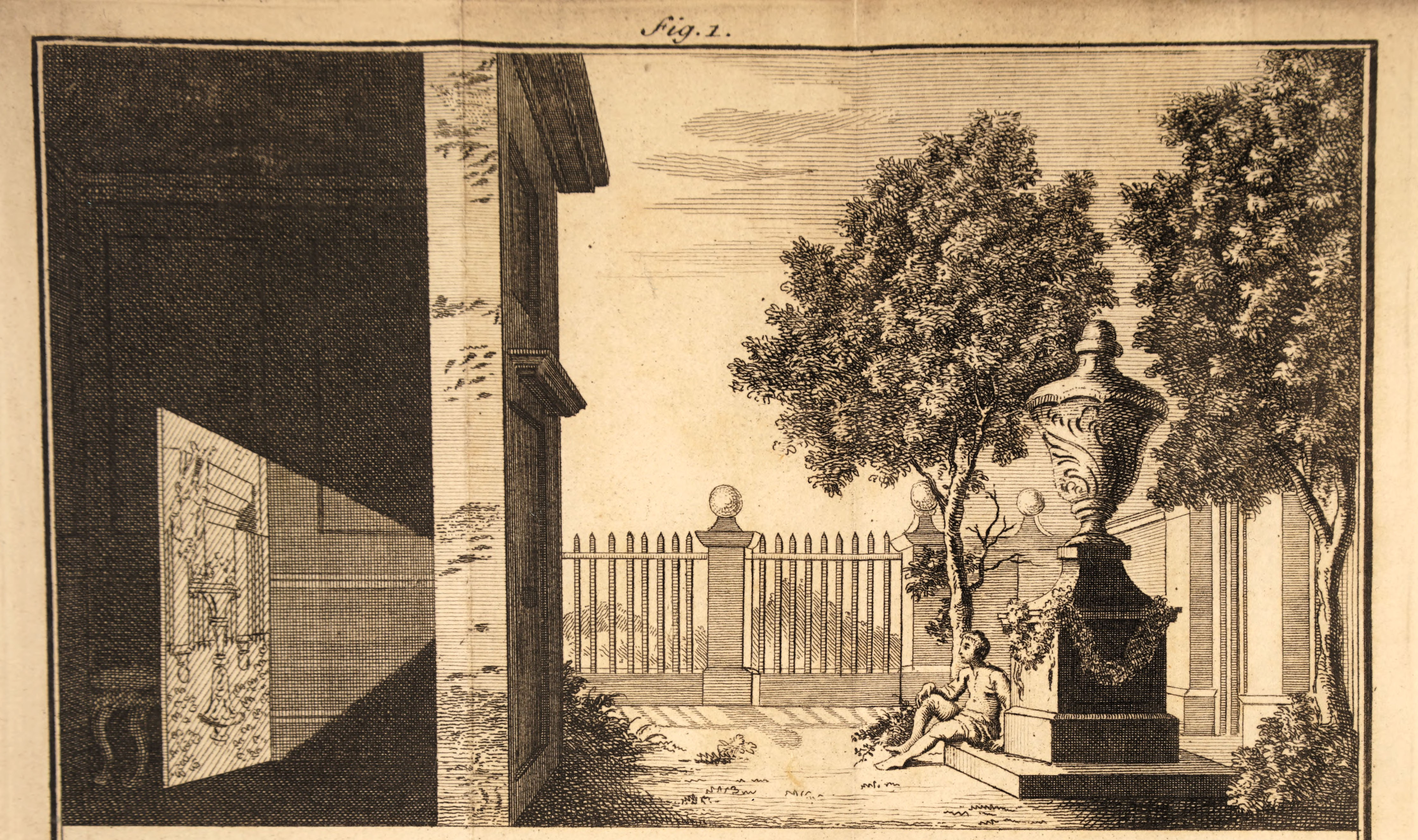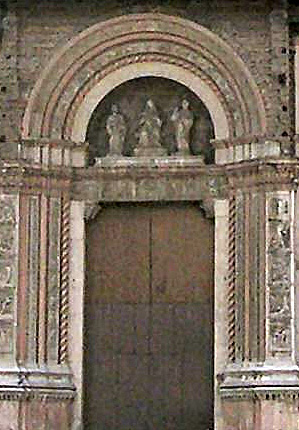|
Giovanni Cassini
Giovanni Domenico Cassini, also known as Jean-Dominique Cassini (8 June 1625 – 14 September 1712) was an Italian (naturalised French) mathematician, astronomer and engineer. Cassini was born in Perinaldo, near Imperia, at that time in the County of Nice, part of the Savoyard state. Cassini is known for his work on astronomy and engineering. He discovered four satellites of the planet Saturn (planet), Saturn and noted the division of the rings of Saturn; the Cassini Division was named after him. Giovanni Domenico Cassini was also the first of his family to begin work on the project of creating a topographic map of France. The Cassini–Huygens, ''Cassini'' space probe, launched in 1997, was named after him and became the fourth to visit the planet Saturn and the first to orbit the planet. Life Time in Italy Cassini was the son of Jacopo Cassini, a Tuscan, and Giulia Crovesi. In 1648 Cassini accepted a position at the observatory at Panzano, near Bologna, to work with Marqui ... [...More Info...] [...Related Items...] OR: [Wikipedia] [Google] [Baidu] |
Perinaldo
Perinaldo ( lij, Preinoud) is a ''comune'' (municipality) in the Province of Imperia in the Italy, Italian region Liguria, located about southwest of Genoa and about west of Imperia (city), Imperia. It is the birthplace of the 17th-century Italian naturalised French astronomer Giovanni Domenico Cassini. Main sights *Parish church of ''San Nicola da Bari'', built in 1489. It houses a 15th-century wooden crucifix. *Church of ''Sant'Antonio abate'' (1590–1600) *Sanctuary of the Visitation (17th century) *Astronomical observatory Twin towns * Tourves, France, since 1993 * Buey Arriba, Cuba References External links Official website Cities and towns in Liguria {{Liguria-geo-stub ... [...More Info...] [...Related Items...] OR: [Wikipedia] [Google] [Baidu] |
Topographic Map
In modern mapping, a topographic map or topographic sheet is a type of map characterized by large- scale detail and quantitative representation of relief features, usually using contour lines (connecting points of equal elevation), but historically using a variety of methods. Traditional definitions require a topographic map to show both natural and artificial features. A topographic survey is typically based upon a systematic observation and published as a map series, made up of two or more map sheets that combine to form the whole map. A topographic map series uses a common specification that includes the range of cartographic symbols employed, as well as a standard geodetic framework that defines the map projection, coordinate system, ellipsoid and geodetic datum. Official topographic maps also adopt a national grid referencing system. Natural Resources Canada provides this description of topographic maps: Other authors define topographic maps by contrasting them with anot ... [...More Info...] [...Related Items...] OR: [Wikipedia] [Google] [Baidu] |
Johannes Kepler
Johannes Kepler (; ; 27 December 1571 – 15 November 1630) was a German astronomer, mathematician, astrologer, natural philosopher and writer on music. He is a key figure in the 17th-century Scientific Revolution, best known for his laws of planetary motion, and his books ''Astronomia nova'', ''Harmonice Mundi'', and ''Epitome Astronomiae Copernicanae''. These works also provided one of the foundations for Newton's theory of universal gravitation. Kepler was a mathematics teacher at a seminary school in Graz, where he became an associate of Prince Hans Ulrich von Eggenberg. Later he became an assistant to the astronomer Tycho Brahe in Prague, and eventually the imperial mathematician to Emperor Rudolf II and his two successors Matthias and Ferdinand II. He also taught mathematics in Linz, and was an adviser to General Wallenstein. Additionally, he did fundamental work in the field of optics, invented an improved version of the refracting (or Keplerian) telescope, an ... [...More Info...] [...Related Items...] OR: [Wikipedia] [Google] [Baidu] |
Camera Obscura
A camera obscura (; ) is a darkened room with a aperture, small hole or lens at one side through which an image is 3D projection, projected onto a wall or table opposite the hole. ''Camera obscura'' can also refer to analogous constructions such as a box or tent in which an exterior image is projected inside. Camera obscuras with a lens in the opening have been used since the second half of the 16th century and became popular as aids for drawing and painting. The concept was developed further into the photographic camera in the first half of the 19th century, when camera obscura boxes were used to exposure (photography), expose photosensitivity, light-sensitive materials to the projected image. The camera obscura was used to study eclipses without the risk of damaging the eyes by looking directly into the sun. As a drawing aid, it allowed tracing the projected image to produce a highly accurate representation, and was especially appreciated as an easy way to achieve proper grap ... [...More Info...] [...Related Items...] OR: [Wikipedia] [Google] [Baidu] |
Gnomon
A gnomon (; ) is the part of a sundial that casts a shadow. The term is used for a variety of purposes in mathematics and other fields. History A painted stick dating from 2300 BC that was excavated at the astronomical site of Taosi is the oldest gnomon known in China. The gnomon was widely used in ancient China from the second century BC onward in order to determine the changes in seasons, orientation, and geographical latitude. The ancient Chinese used shadow measurements for creating calendars that are mentioned in several ancient texts. According to the collection of Zhou Chinese poetic anthologies ''Classic of Poetry'', one of the distant ancestors of King Wen of the Zhou dynasty used to measure gnomon shadow lengths to determine the orientation around the 14th century BC. The ancient Greek philosopher Anaximander (610–546 BC) is credited with introducing this Babylonian instrument to the Ancient Greeks. The ancient Greek mathematician and astronomer Oenopides used the ... [...More Info...] [...Related Items...] OR: [Wikipedia] [Google] [Baidu] |
San Petronio Basilica
The Basilica of San Petronio is a minor basilica and church of the Archdiocese of Bologna located in Bologna, Emilia Romagna, northern Italy. It dominates Piazza Maggiore. The basilica is dedicated to the patron saint of the city, Saint Petronius, who was the bishop of Bologna in the fifth century. Construction began in 1390 and its main facade has remained unfinished since. The building was transferred from the city to the diocese in 1929; the basilica was finally consecrated in 1954. It has been the seat of the relics of Bologna's patron saint only since 2000; until then they were preserved in the Santo Stefano church of Bologna. History Construction In 1388, the ''Consiglio Generale dei Seicento'' prepared the construction of the church as a civic temple. To make room for the church, the adjacent Curia of Sancti Ambrosii was demolished, together with the majority of one of the city's burgs, including at least eight churches and towers. The first stone of construction was ... [...More Info...] [...Related Items...] OR: [Wikipedia] [Google] [Baidu] |
Pope Alexander VII
Pope Alexander VII ( it, Alessandro VII; 13 February 159922 May 1667), born Fabio Chigi, was head of the Catholic Church and ruler of the Papal States from 7 April 1655 to his death in May 1667. He began his career as a vice- papal legate, and he held various diplomatic positions in the Holy See. He was ordained as a priest in 1634, and he became bishop of Nardo in 1635. He was later transferred in 1652, and he became bishop of Imola. Pope Innocent X made him secretary of state in 1651, and in 1652, he was appointed a cardinal. Early in his papacy, Alexander, who was seen as an anti-nepotist at the time of his election, lived simply; later, however, he gave jobs to his relatives, who eventually took over his administration. His administration worked to support the Jesuits. However, his administration's relations with France were strained due to his frictions with French diplomats. Alexander was interested in architecture and supported various urban projects in Rome. He als ... [...More Info...] [...Related Items...] OR: [Wikipedia] [Google] [Baidu] |
Hydraulic Engineering
Hydraulic engineering as a sub-discipline of civil engineering is concerned with the flow and conveyance of fluids, principally water and sewage. One feature of these systems is the extensive use of gravity as the motive force to cause the movement of the fluids. This area of civil engineering is intimately related to the design of bridges, dams, channels, canals, and levees, and to both sanitary and environmental engineering. Hydraulic engineering is the application of the principles of fluid mechanics to problems dealing with the collection, storage, control, transport, regulation, measurement, and use of water.Prasuhn, Alan L. ''Fundamentals of Hydraulic Engineering''. Holt, Rinehart, and Winston: New York, 1987. Before beginning a hydraulic engineering project, one must figure out how much water is involved. The hydraulic engineer is concerned with the transport of sediment by the river, the interaction of the water with its alluvial boundary, and the occurrence of scour an ... [...More Info...] [...Related Items...] OR: [Wikipedia] [Google] [Baidu] |
C/1652 Y1
C/1652 Y1 was a naked-eye comet observed, among others by Jan van Riebeeck. First spotted on December 16, 1652, by Dutch observers at Pernambuco Pernambuco () is a state of Brazil, located in the Northeast region of the country. With an estimated population of 9.6 million people as of 2020, making it seventh-most populous state of Brazil and with around 98,148 km², being the 19 ... (Brazil). the comet was about 280 AU from the Sun (very approximate due to poorly determined orbit).NASAJPL HORIZONS current ephemerismore accurate position, no plot. References Non-periodic comets 16521216 {{comet-stub ... [...More Info...] [...Related Items...] OR: [Wikipedia] [Google] [Baidu] |
Francesco Maria Grimaldi
Francesco Maria Grimaldi, SJ (2 April 1618 – 28 December 1663) was an Italian Jesuit priest, mathematician and physicist who taught at the Jesuit college in Bologna. He was born in Bologna to Paride Grimaldi and Anna Cattani. Work Between 1640 and 1650, working with Riccioli, he investigated the free fall of objects, confirming that the distance of fall was proportional to the square of the time taken. Grimaldi and Riccioli also made a calculation of gravity at the earth's surface by recording the oscillations of an accurate pendulum. In astronomy, he built and used instruments to measure lunar mountains as well as the height of clouds, and drew an accurate map or, ''selenograph'', which was published by Riccioli and now adorns the entrance to the National Air and Space Museum in Washington D.C. He was the first to make accurate observations on the diffraction of light (although by some accounts Leonardo da Vinci had earlier noted it), and coined the word 'diffraction'. T ... [...More Info...] [...Related Items...] OR: [Wikipedia] [Google] [Baidu] |
Giovanni Battista Riccioli
Giovanni Battista Riccioli, SJ (17 April 1598 – 25 June 1671) was an Italian astronomer and a Catholic priest in the Jesuit order. He is known, among other things, for his experiments with pendulums and with falling bodies, for his discussion of 126 arguments concerning the motion of the Earth, and for introducing the current scheme of lunar nomenclature. He is also widely known for discovering the first double star. He argued that the rotation of the Earth should reveal itself because on a rotating Earth, the ground moves at different speeds at different times. Biography Riccioli was born in Ferrara. He entered the Society of Jesus on 6 October 1614. After completing his novitiate, he began to study humanities in 1616, pursuing those studies first at Ferrara, and then at Piacenza. From 1620 to 1628 he studied philosophy and theology at the College of Parma. Parma Jesuits had developed a strong program of experimentation, such as with falling bodies. One of the most famou ... [...More Info...] [...Related Items...] OR: [Wikipedia] [Google] [Baidu] |







